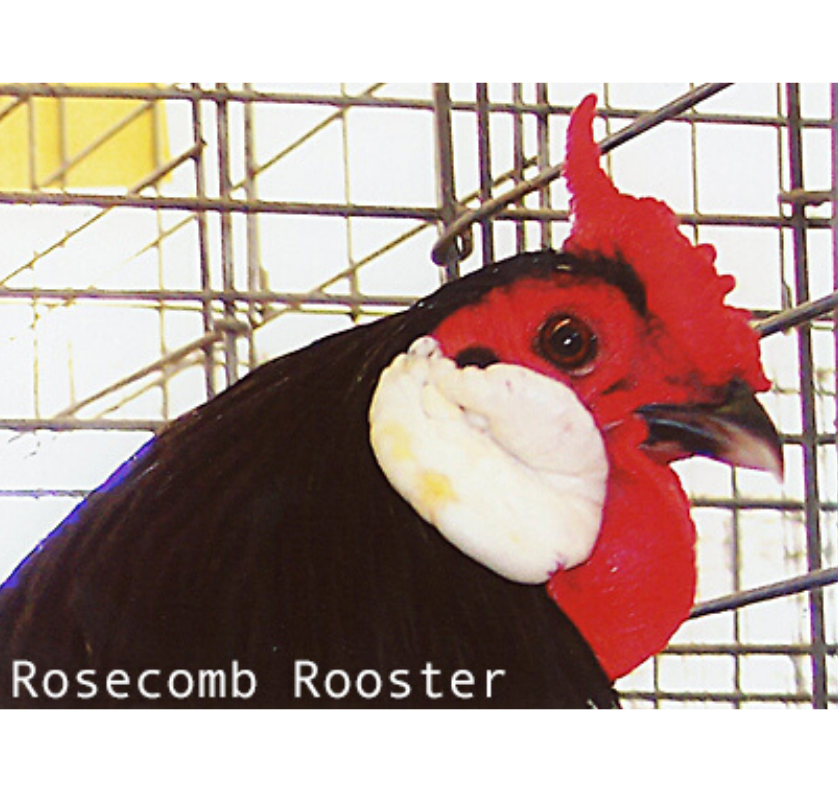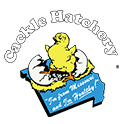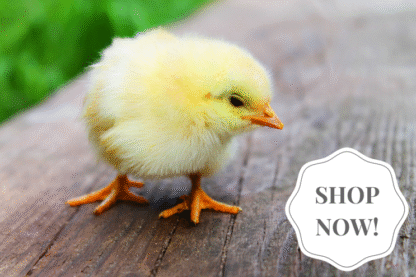
Like all reproductive qualities of poultry, fertility has low heritability. However, many factors other than inheritance come into play. Most of them are related to either mechanical issues or faulty management. Let’s look at the 12 most common reasons for low fertility in chickens and other poultry.
Mechanical Issues
1. Comb Style
Single comb breeds tend to have higher fertility than rose comb breeds. And the sperm of single comb or heterozygous rose comb roosters (with genes for both comb styles) live longer than the sperm of homozygous rose comb roosters (with only rose comb genes). Although purists insist that the occasional single comb chick hatched from rose comb parents should not be used for breeding, old-timers keep a few single comb to ensure heterozygosity and good fertility.
2. Comb Size
Breeds with excessively large combs have trouble negotiating feeders with narrow openings. The result can be nutritional deficiency that affects fertility. Large single combs may also suffer frostbite, resulting in reduced fertility or even sterility.
3. Outsize Crests
Houdans, Polish, and other heavily crested roosters may not see well and therefore have trouble catching hens for mating. A quick fix — assuming the rooster will not be shown any time soon — is to clip back the crest.
4. Heavy Feathering
Brahmas, Cochins, Wyandottes, and other heavily feathered breeds have trouble navigating through all those vent feathers. Fertility may be improved by clipping feathers surrounding the vent, but only if the birds are not being groomed for exhibition.
5. Rumplessness
Araucanas — and occasionally birds of other breeds — have no tail. As a result, the feathers around their vents can’t separate properly for mating. The quick fix is to clip the vent feathers of both roosters and hens, with more attention to the feathers above the hens’ vents and those below the roosters’ vents. A wiser solution is to breed individuals with the least amount of vent feathering.
6. Heavy Muscling
Cornish roosters and other heavy-breasted males have trouble mounting hens because of the wide distance between their legs. Such breeds are typically bred through artificial insemination.
7. Breeder Age
Most roosters reach sexual maturity around 6 months of age, although early-maturing breeds may be ready to mate sooner, while late-maturing breeds may not mature until they are 7 to 8 months old. Fertility peaks at about three years of age, then declines slightly each year. How fast it declines depends on the rooster’s breed, health, and management.
Management Issues
8. Inbreeding Depression
Fertility issues may arise in a small inbred population. By concentrating genes, inbreeding creates uniformity of size, color, and type but also concentrates weaknesses, including low fertility and poor hatchability. Popular breeds with lots of available strains offer more opportunities to avoid inbreeding depression than less common breeds.
9. Mating Ratio
Low fertility can result from an inappropriate mating ratio for the breed. Cackle Hatchery® takes the guesswork out of mating ratios by including this information in the “Breed Facts” tab of each breed description. The ideal female-to-male ratio is influenced not only by the rooster’s breed, but also by physical condition, health, and age. Barely mature roosters and aging roosters do better with about half as many hens as a rooster in his prime.
10. Excessive Stress
Reduced fertility can result from outside disturbances — not only from prowling predators, but also from unruly dogs and teasing children. Noisy kids or playful, barking dogs may not be doing visible damage to your chickens, but nevertheless are causing harmful stress. Excessive showing of exhibition birds also can cause fertility-reducing stress.
11. Injury or Illness
A rooster with an injured foot or leg may have difficulty breeding, resulting in reduced egg fertility. Low fertility may also result from an infestation of internal and external parasites, a disease, or a reaction to a medication, a pesticide, or a toxin (such as might occur in moldy feed).
12. Poor Nutrition
Assuming the breeder flock is healthy and free of both internal and external parasites, proper nutrition is the greatest factor in promoting good fertility. Poor breeder-flock nutrition can arise because rations are nutritionally deficient (common in homemade feed formulas), poorly balanced (roosters get too fat), or insufficient (roosters are too thin).
Improving Fertility
Season affects fertility, which is lowest during the heat of summer and also in winter when daylight hours are fewer than 14. Fertility can be improved by exposing roosters to 14 hours of total light, artificial and daylight combined, starting four to six weeks before you plan to collect eggs for hatching.
Augmenting daylight hours by providing additional light stimulates the flow of semen and thereby improves fertility.
And that’s today’s news from the Cackle Coop.
Gail Damerow is the author of Hatching and Brooding Your Own Chicks

